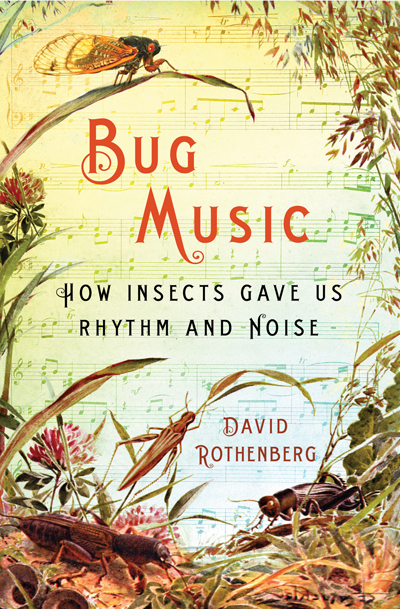Are Whales & Nightingales Singing the Same Song
Heather McElhatton
Part of A Beautiful World

Long before birds, long before whales, insects have been thrumming, scraping, and drumming complex beats out into the world.
David Rothenberg decided to investigate the resounding beats of cicadas, crickets, katydids, leafhoppers and water bugs in his unusual third foray into music made with and out of the animal world in a new book and CD called "Bug Music." Rothenberg recorded himself playing with cicadas in the Northeastern United States who emerged from their seventeen-year cycle—the longest gestation period of any animal. He says "Those who experience this great sonic invasion compare their sense of wonder to the arrival of a comet or a solar eclipse. This unending rhythmic cycle is just one unique example of how the pulse and noise of insects has taught humans the meaning of rhythm, from the whirr of a cricket's wings to this unfathomable and exact seventeen-year beat."
 In listening to cicadas, as well as other humming, clicking, and thrumming insects, Bug Music considers the radical notion that we humans got our idea of rhythm, synchronization, and dance from the world of insect sounds that surrounded our species over the millions of years over which we evolved.
In listening to cicadas, as well as other humming, clicking, and thrumming insects, Bug Music considers the radical notion that we humans got our idea of rhythm, synchronization, and dance from the world of insect sounds that surrounded our species over the millions of years over which we evolved.
Completing the trilogy he began with Why Birds Sing and Thousand Mile Song, David Rothenberg explores a unique part of our relationship with nature and sound—the music of insects that has provided a soundtrack for humanity throughout the history of our species.
 Bug Music continues Rothenberg's in-depth research and spirited writing on the relationship between human and animal music, adding another fascinating chapter to his work recording "inter-species" symphonies with other animals such as Nightingales and Humpback whales, which surprisingly seem to be singing similar songs.
Bug Music continues Rothenberg's in-depth research and spirited writing on the relationship between human and animal music, adding another fascinating chapter to his work recording "inter-species" symphonies with other animals such as Nightingales and Humpback whales, which surprisingly seem to be singing similar songs.
Rothenberg's work challenges our understanding of inter-species communication and our place in nature and our relationship to the creatures surrounding us, making a passionate case for the interconnectedness of species.
Bug Music Website
Photos Courtesy of David Rothenberg.
Discover more stories from A Beautiful World on Soundcloud
Learn more about A Beautiful World


